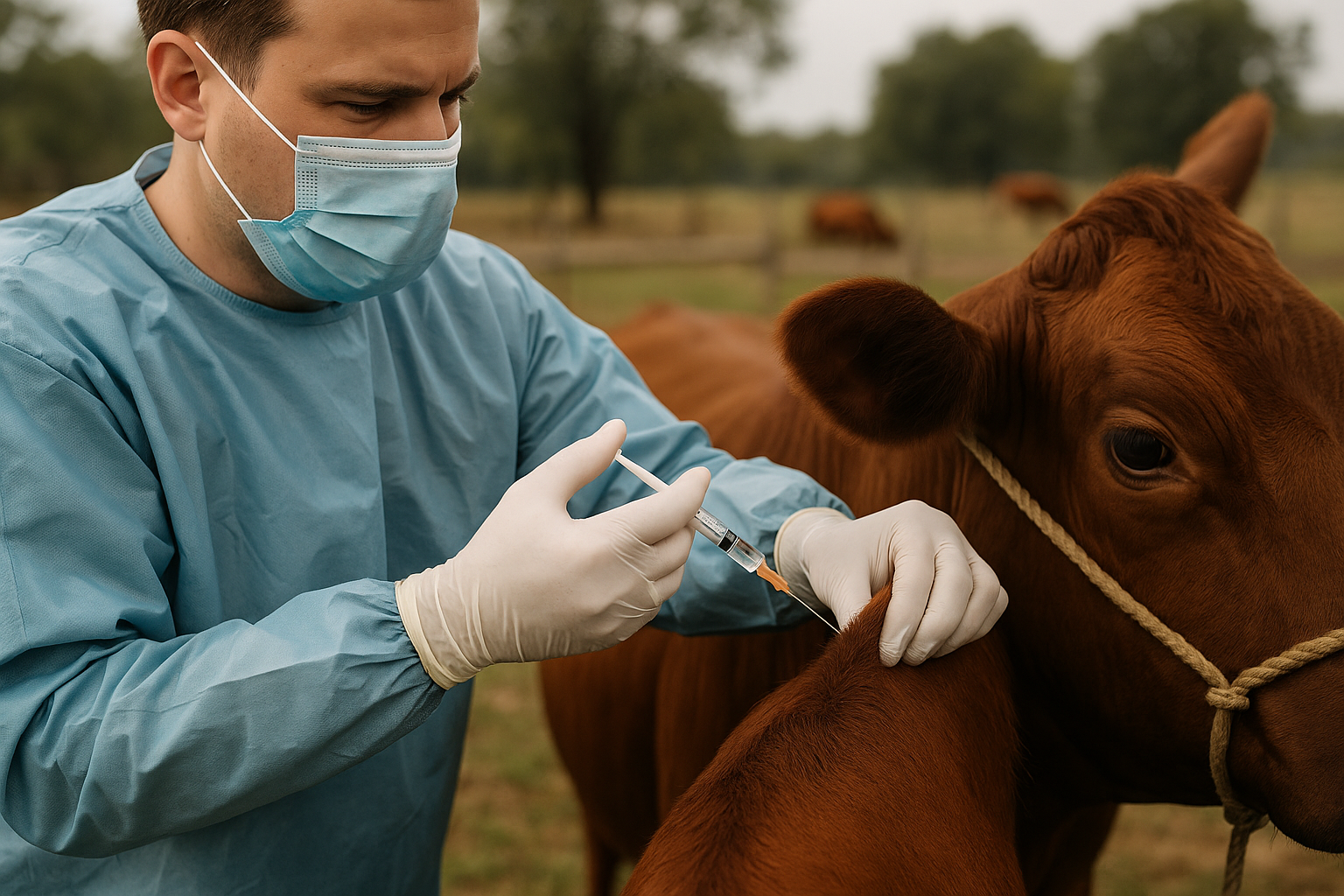Microneedles, nanoparticles, and AI: Future of veterinary vaccinology unveiled
The study notes that cold-chain failures result in the loss of nearly half of human vaccines worldwide, a rate believed to be mirrored in veterinary settings. Such failures can cost hundreds of millions of dollars annually and increase the risk of immunization failure and outbreaks. Injectable vaccines also pose operational risks, including needle-stick injuries, cross-contamination, and logistical delays when vaccinators must travel across remote, inaccessible regions.

Veterinary scientists are pushing the boundaries of immunization technology by developing thermostable and novel vaccine delivery platforms that could reshape global animal health and food security. A team of researchers has outlined a transformative roadmap for overcoming longstanding cold-chain challenges in veterinary vaccinology.
Their peer-reviewed review study, “Revolutionizing Veterinary Vaccines: Overcoming Cold-Chain Barriers Through Thermostable and Novel Delivery Technologies,” published in Applied Microbiology points out the urgent need to move beyond conventional vaccine systems that rely heavily on refrigeration and complex logistics, especially in low- and middle-income countries where infrastructure limitations hinder disease prevention.
Why cold-chain dependence remains a barrier
Vaccines are critical for controlling infectious diseases such as foot-and-mouth disease, classical swine fever, and avian influenza. They also safeguard food systems and reduce reliance on antibiotics. Yet, their dependence on refrigeration between 2 and 8 degrees Celsius makes global distribution highly vulnerable. Inadequate infrastructure, frequent power outages, and poor transport conditions in developing regions often compromise vaccine potency.
The study notes that cold-chain failures result in the loss of nearly half of human vaccines worldwide, a rate believed to be mirrored in veterinary settings. Such failures can cost hundreds of millions of dollars annually and increase the risk of immunization failure and outbreaks. Injectable vaccines also pose operational risks, including needle-stick injuries, cross-contamination, and logistical delays when vaccinators must travel across remote, inaccessible regions.
These limitations are particularly acute in pastoralist communities of Africa and Asia, where livestock vaccination campaigns often stall due to poor infrastructure, extreme weather conditions, or cultural resistance to injection-based methods. The authors argue that overcoming these barriers requires a new generation of vaccines that are stable at ambient temperatures, easy to administer, and scalable across species.
How thermostable formulations and new delivery systems provide solutions
The research outlines recent advances in vaccine stabilization technologies that reduce reliance on refrigeration. Lyophilization, or freeze-drying, remains the most widely used approach, helping preserve antigenic integrity under low temperatures and pressures. Meanwhile, spray-drying is emerging as a scalable alternative, producing powdered vaccines that are ideal for mucosal delivery routes such as intranasal or oral administration.
Stabilizers like trehalose, sucrose, gelatin, and polymers are critical for preventing heat-induced degradation of vaccine antigens. These methods have already shown promise in recombinant viral capsids developed for foot-and-mouth disease, which demonstrated strong immune protection and stability even under elevated temperatures. The authors highlight such breakthroughs as essential for developing vaccines that can withstand the environmental conditions of low-resource regions.
Equally significant are innovations in delivery platforms. Nanoparticle-based vaccines, or nanovaccines, encapsulate antigens in lipid, polymer, or protein-based carriers to improve stability, control release, and boost immune responses. Some nanoparticles act as adjuvants, enhancing immunogenicity while protecting antigens from degradation. Microneedle patches represent another breakthrough, enabling painless, self-administrable, and thermostable vaccination at ambient temperatures. Their portability and ease of use make them highly suitable for rural immunization drives.
Mucosal and oral delivery routes are also advancing rapidly. Intranasal sprays and aerosolized vaccines directly target respiratory immunity, offering strong protection against airborne pathogens in both humans and animals. Oral vaccines, administered through feed or drinking water, are already gaining ground in poultry, livestock, and aquaculture, with thermostable formulations showing resilience in tropical climates. Together, these approaches create a synergy where thermostability and user-friendly delivery converge to expand vaccination coverage far beyond the reach of traditional injectables.
What this means for One Health and the future of veterinary vaccinology
The implications of thermostable, easy-to-deliver vaccines extend beyond veterinary care. The authors underscore their significance for advancing One Health goals, which integrate human, animal, and environmental health. Many animals serve as reservoirs for zoonotic pathogens, from avian influenza to Rift Valley fever, which can spill over into human populations. Preventing such transmissions through large-scale animal vaccination is a frontline strategy for pandemic preparedness.
For instance, thermostable formulations of Newcastle disease vaccines and Rift Valley fever vaccines have already demonstrated resilience at elevated temperatures, allowing successful field trials in rural communities without refrigeration access. By cutting energy-intensive cold-chain logistics, these vaccines also reduce greenhouse gas emissions, offering environmental as well as economic benefits.
Artificial intelligence adds another layer of innovation. The review highlights the role of AI tools such as DeepVacPred for epitope prediction, AlphaFold for protein structure modeling, and Vaxign for genome-based vaccine design. These platforms accelerate antigen discovery, streamline formulation, and support real-time outbreak forecasting. During the COVID-19 pandemic, AI demonstrated its utility in expediting vaccine development, and its integration into veterinary vaccinology is expected to bring similar gains.
- READ MORE ON:
- Thermostable veterinary vaccines
- Cold-chain free vaccines
- Next-generation animal vaccines
- Nanoparticle-based veterinary vaccines
- One Health vaccine strategies
- Zoonotic disease prevention vaccines
- AI in vaccine development
- Role of AI in next-generation veterinary vaccines
- Cold-chain barriers in animal vaccination programs
- FIRST PUBLISHED IN:
- Devdiscourse










